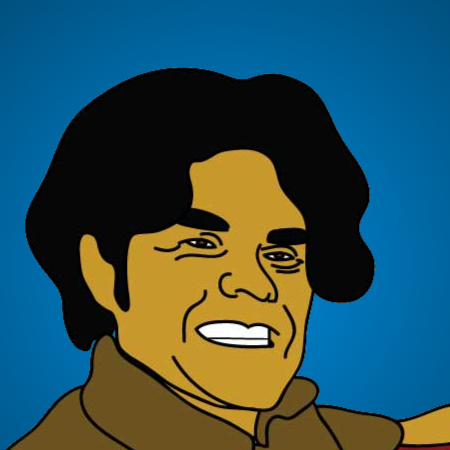Episode 4: Live Coding & Jazz
The code for this episode is available here.
I had a different idea for the fourth episode, but then I saw John McLaughlin’s tweet about International Jazz day, and decided to do something for that instead.
Obviously I’d talk about Jazz in the musical section, but it wasn’t clear yet what part of Jazz I’d talk about. I spoke to a few people and it seemed like a good idea would be to talk about improvisation, and how jazz musicians do it; in particular, I’m hoping this helps people who don’t “get” jazz to understand what we’re doing when we play it, and that we’re not just playing random notes! :)
Once I decided on improvisation, the idea for Live Coding came kind of naturally, especially since SuperCollider (which I use for a lot of my performances) is one of the most commnly used systems for live coding.
The ideas for the visualizations came from different sources. The idea for the little scribbles came after watching a couple of YouTube videos about the Fourier transform and how you can use it to draw things; I decided to try it out but without a target drawing, just using the mechanics of it for creating pretty scribbles. The jellyfish idea was inspired by something I saw on Instagram (I unfortunately can’t remember who had posted it), but I thought it’d be a good way to visualize a bassline. The squiggly tail was done with shaders, which I’m still trying to get better at. The shifting backgrounds were also done with shaders, and I was using it as a way to explore them and get better at them; as I was playing around I thought they’d be neat to give a visual interpretation for the changing chords.
I’m happy with the way the visual ended up, as there are multiple “layers” to them, directly tied to the musical performance: the shifting backgrounds are tied to the chords, the jellyfish are tied to the basslines, and the scribbles are tied to the melodies.
Links
Subscribe to the YouTube channel!.
Image attributions
For this episode I used a lot of images from Wikimedia Commons. Here are the credit attributions:
- Live coding picture: From https://commons.wikimedia.org/wiki/File:Music_livecoding.jpg, picture by Matt Biddulph, Uploaded from http://flickr.com/photo/51035707449@N01/3223855666 using Flickr upload bot.
- Sting: From https://commons.wikimedia.org/wiki/File:Sting_by_Yancho_Sabev.jpg, Sting by Yancho Sabev.jpg.
- Frank Zappa pic: From https://commons.wikimedia.org/wiki/File:Frank_Zappa_1973_2.JPG.
- David Gilmour: From https://commons.wikimedia.org/wiki/File:David_Gilmour_and_stratocaster.jpg, by Jean-Pierre Jeannin. Toulouse fut l’une des trois étapes européennes du Pink Floyd, groupe mythique des années 70. L’après midi, j’échangeais quelques mots en anglais avec David Gilmour guitariste envoûtant qui plus tard prendra les rênes du groupe, succédant à Roger Waters. Le soir, je fus le seul photographe admis sur le plateau. De ses débuts à 2006, Pink Floyd a vendu 250 millions d’albums.
- Chick Corea: From https://commons.wikimedia.org/wiki/File:Chick_Corea_(ZMF_2019)_IMGP8022.jpg, photo by Ice Boy Tell (https://commons.wikimedia.org/wiki/User:Ice_Boy_Tell).
- Paul McCartney concert: From https://commons.wikimedia.org/wiki/File:Paul_McCartney,_Tel_Aviv_069.JPG, by DMY (https://commons.wikimedia.org/wiki/User:DMY).
- Sound of Music: From https://commons.wikimedia.org/wiki/File:The_Sound_of_Music_-_geograph.org.uk_-_1129470.jpg, This image was taken from the Geograph project collection (https://commons.wikimedia.org/wiki/Commons:Geograph_Britain_and_Ireland). See this photograph’s page (https://www.geograph.org.uk/photo/1129470) on the Geograph website for the photographer’s contact details. The copyright on this image is owned by Stephen McKay and is licensed for reuse under the Creative Commons Attribution-ShareAlike 2.0 license (https://commons.wikimedia.org/wiki/Creative_Commons).
comments powered by Disqus
